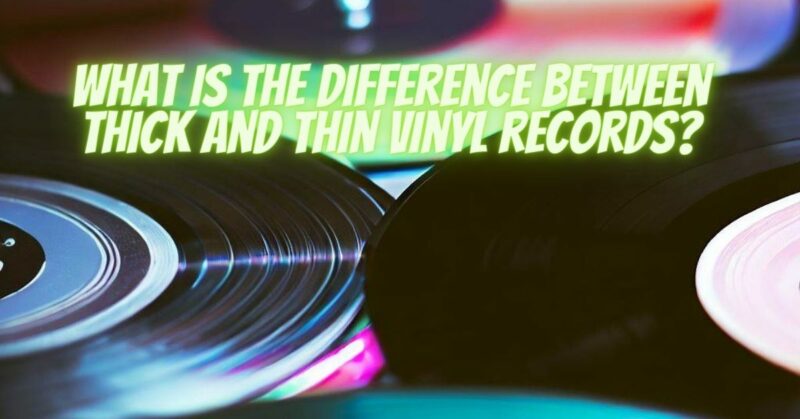When exploring the world of vinyl records, you might encounter terms like “thick vinyl” and “thin vinyl” that refer to variations in the physical composition of the records. These terms aren’t just about weight; they hint at important differences in manufacturing processes, durability, and potential sound quality. In this article, we’ll dive into the nuances of thick and thin vinyl records to help you understand their distinctions and implications for your vinyl collection.
The Basics of Vinyl Record Construction
Before delving into the differences between thick and thin vinyl records, let’s revisit the fundamentals of how vinyl records are made:
- Grooves: Vinyl records have grooves carved into their surfaces. These grooves contain the audio information, with variations in depth corresponding to the music’s dynamics.
- Mastering and Pressing: During the manufacturing process, a master recording is created, and this master is used to press multiple copies of the vinyl record. The grooves from the master are transferred to a stamper, which then presses the grooves into the vinyl material.
Thick Vinyl Records: Substance and Durability
Thick vinyl records refer to records with a greater thickness than the standard range of 120-140 grams. While there isn’t a specific weight that designates “thick,” these records are often associated with a more substantial feel and increased durability.
Pros of Thick Vinyl Records:
- Durability: Thicker vinyl is generally more resistant to warping and damage during handling and storage, leading to a longer lifespan.
- Potential for Improved Sound: The deeper grooves on thick vinyl might allow for potentially improved sound quality, including better bass response and less surface noise.
- Collectibility: The weight and feel of thick vinyl can enhance the perceived value of the record for collectors.
Cons of Thick Vinyl Records:
- Compatibility: Some older turntables and tonearms might struggle to properly track the grooves of thicker records, leading to playback issues.
- Playback Equipment: To fully benefit from the potential audio improvements, a high-quality playback setup is often required.
Thin Vinyl Records: Elegance and Delicacy
Thin vinyl records, also known as lightweight records, fall on the lower end of the weight spectrum. They are characterized by their lighter weight compared to standard records.
Pros of Thin Vinyl Records:
- Compatibility: Thin vinyl is generally compatible with a wide range of turntables and tonearms, reducing the likelihood of playback issues.
- Cost-Effectiveness: Manufacturing thin vinyl records can be less expensive, potentially resulting in more affordable records.
- Variety of Releases: Some labels release limited editions or special pressings on thin vinyl, making them desirable for collectors seeking unique editions.
Cons of Thin Vinyl Records:
- Durability Concerns: Thin vinyl is more prone to warping and damage, potentially affecting its longevity.
- Potential Sound Limitations: The shallower grooves on thin vinyl might impact audio quality, leading to a potential loss of dynamic range and detail.
The choice between thick and thin vinyl records depends on various factors, including your playback equipment, collecting goals, and preferences. Thick vinyl offers potential audio benefits and increased durability but requires compatible equipment. Thin vinyl is more universally compatible and can be cost-effective, but might have durability and potential audio limitations. As you build your vinyl collection, consider your priorities and the overall listening experience you wish to achieve. The allure of vinyl lies in its ability to deliver a unique, tangible connection to music, regardless of the thickness of the vinyl.

